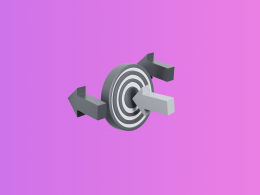Accounting is one of the most important aspects for businesses of all sizes and all industries, as it is key to understanding the financial health and success of any organization.
Accounts receivable is an integral part of accounting, because each company has to collect payments from customers for goods and services that have been delivered. Thus, it is also the fundamental element of maintaining a healthy cash flow. Thankfully, QuickBooks allows you to manage accounts receivable in their system.
In this article, we’ll take a closer look at what accounts receivable is and provide you with an overview of accounts receivable in QuickBooks. Let’s dive in!
This article provides a short overview of accounts receivable. Read our extensive guide Understanding Accounts Receivable (AR): Accounting Basics You Need to Know to explore accounts receivable in detail.
What is accounts receivable?
Accounts receivable is an important asset in any business’s balance sheet. It shows how much money customers owe your company for goods or services they have purchased from you in the past. Under accrual basis accounting, it is recorded as an asset and falls under the ‘current assets’ section of your company’s balance sheet or general ledger.
Having an accurate record of accounts receivable ensures that you are able to collect payments for goods or services sold to customers promptly, which contributes to the overall financial health of your business. This can be done by tracking customer invoices and making sure they are paid on time. Additionally, ensuring that proper collection procedures such as sending out timely reminders and setting up payment plans for overdue customers are in place can help maintain a healthy accounts receivable balance.
Reconciling your accounts receivable regularly is also important in order to avoid discrepancies and ensure accuracy in the accounting records. This involves comparing the amounts in your general ledger with those in customer accounts and pursuing any discrepancies until they have been resolved. Doing so can help you identify any problems quickly and take corrective action where necessary.
What is accounts receivable in QuickBooks?
QuickBooks provides a streamlined way to set up an automative accounts receivable tracking system. This feature allows users to track sales and customer reports with accuracy and precision. By creating an accounts receivable account in QuickBooks, users can record customer payments, apply finance charges to specific customers, and add reimbursements to individual jobs. This simple process helps users stay organized and on top of their customer accounts. Additionally, with the accounts receivable functionality, users can also review past due amounts, payment terms, and other pertinent customer information as needed.
The accounts receivable tracking feature in QuickBooks helps ensure that all customer information is accurately tracked and reported. This helps businesses maintain strong customer relationships by providing accurate invoices and records. Furthermore, the accounts receivable tracking feature also simplifies the reconciliation process by providing built-in tools that allow businesses to easily match payments with invoices. The ability to easily set up an accounts receivable account in QuickBooks enables businesses to stay organized and efficiently manage their customer accounts in one place.
How does the management of accounts receivable work in Quickbooks?
Once you create the first invoice, Quickbooks will automatically create the accounts receivable account in the chart of accounts. From now on, whenever you create an invoice or receive any payment from a customer, the system will automatically record this transaction under the accounts receivable account.
Once the first invoice is created, Quickbooks will automatically create an accounts receivable account in the chart of accounts. From this point onwards, each time an invoice is created or a payment from a customer is received, the system will automatically register these transactions under this accounts receivable account. This simplifies the process of keeping track of customer payments and makes it easier to identify outstanding invoices.
Want to know more about QuickBooks? Check out our articles on How to write off bad debt in QuickBooks, how to categorize expenses in QuickBooks Online automatically and how to add classes in QuickBooks and automatically apply them to sales.
Why is accounts receivable important?
Having a large customer base is always desirable for any business. However, if some of them are not paying on time or at all, it can create serious cash flow and liquidity problems. To stay ahead of such issues, entrepreneurs should have a system in place to manage working capital.
It is important to keep track of your accounts receivable as it will help you understand how efficiently your customers are paying and whether there are any payment issues that need to be addressed. This can be done by monitoring the accounts receivable turnover ratio, which is calculated by dividing the net credit sales by the average accounts receivable. This ratio indicates how quickly each customer pays off their outstanding invoices and gives an indication of the rate of payment collection.
When looking at the accounts receivable turnover ratio, any unusually high or low figures should be examined carefully as they may indicate a problem with payments being received or with customers being slow to pay. If necessary, additional steps may need to be taken in order to ensure payments are made on time, such as introducing incentives or setting up direct debit
Conclusion
By keeping track of the accounts receivable account and ensuring its accuracy, businesses are able to keep tabs on their finances more easily. This helps them identify any potential problems with slow-paying customers in a timely fashion and take corrective measures to protect their cash flow.
Luckily, you can track accounts receivable in QuickBooks and use Synder as a bridge to connect all your sales channels and payment platforms under one hood. Check out Synder’s integrations for QuickBooks to find the perfect match for your business. Try our 15-day free trial or book a demo to see Synder in action!







.png)
